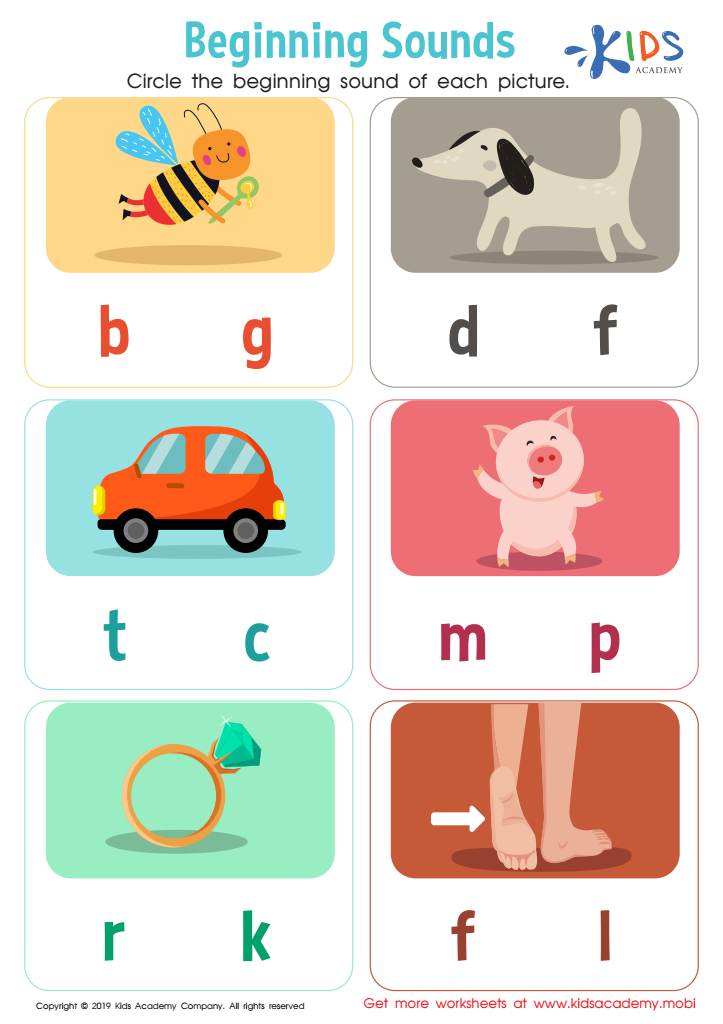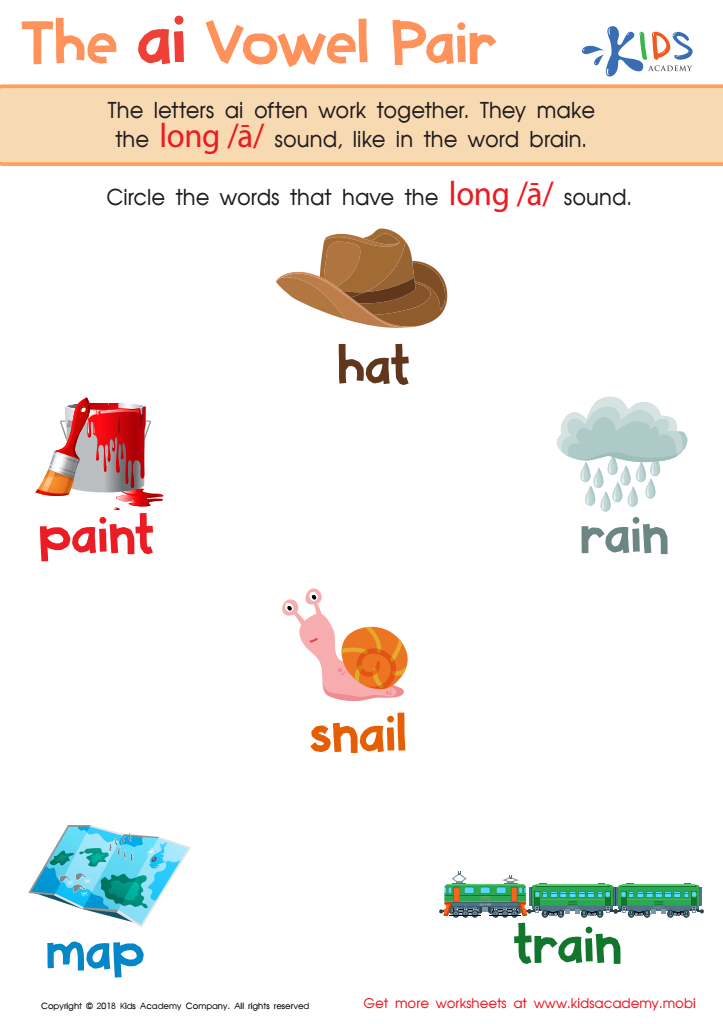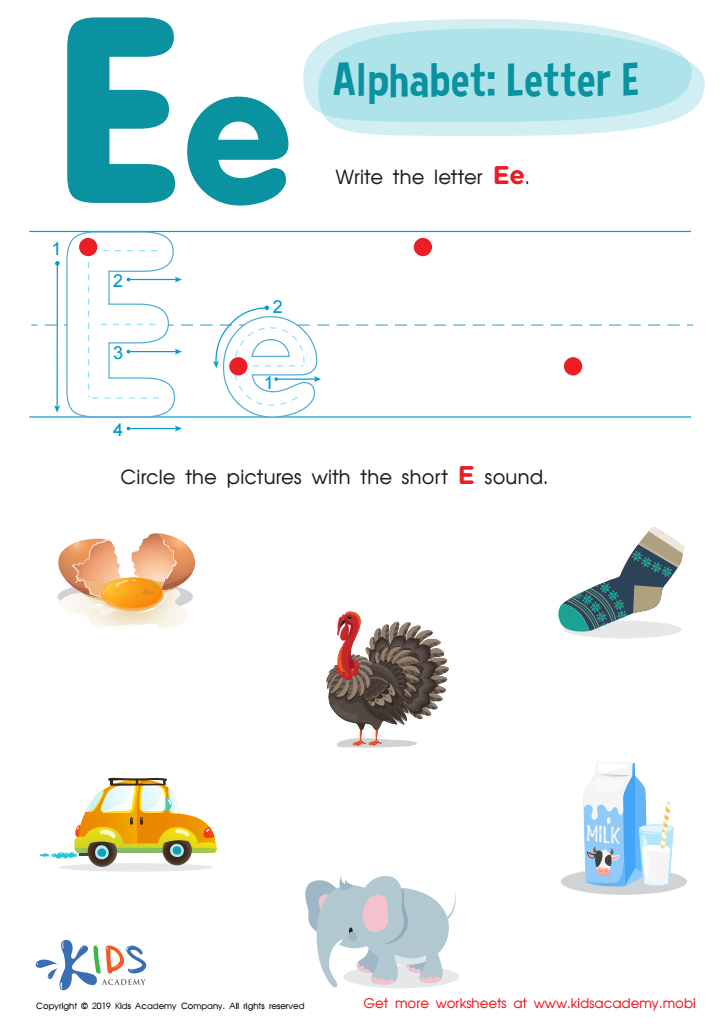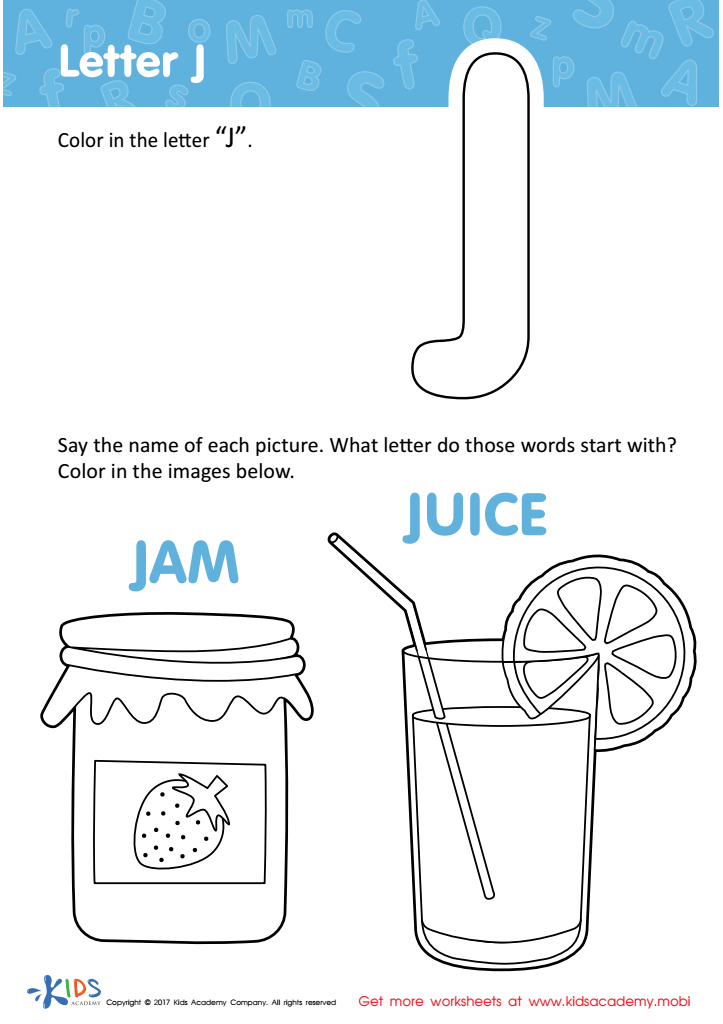Sound-letter association Alphabet Worksheets for Ages 4-7
4 filtered results
-
From - To
Discover our engaging Sound-Letter Association Alphabet Worksheets designed specifically for children aged 4-7! These interactive worksheets help young learners connect sounds with their corresponding letters through fun activities and colorful illustrations. Tailored to enhance phonemic awareness, our exercises encourage kids to identify, match, and practice letters while developing essential reading skills. Ideal for both classroom settings and home learning, our worksheets cater to various skill levels, ensuring that each child can progress at their own pace. Foster a love for learning and boost your child's literacy foundations with our delightful sound-letter association resources today! Download and start exploring!


Beginning Sounds Worksheet


The AI Vowel Pair Worksheet


Letter E Tracing Worksheet


Letter J Coloring Sheet
Sound-letter association is a fundamental concept in literacy development, especially for children aged 4-7 who are in the crucial stages of learning to read and write. At this age, children are naturally curious and receptive to language, making it the ideal time for parents and teachers to prioritize sound-letter associations.
Understanding how specific sounds correspond to letters (phonetic awareness) lays the groundwork for decoding words, which is essential for literacy. Mastery of this skill enhances a child's ability to read unfamiliar words independently, fostering their confidence and motivation.
Furthermore, sound-letter associations support vocabulary development. By linking sounds to their corresponding letters, children begin to grasp how words are formed and pronounced, expanding their language comprehension and expression. This not only aids in reading but also improves writing skills as they learn to spell phonetically.
Encouraging a strong foundation in sound-letter relationships can lead to lifelong literacy skills. For parents and teachers, fostering this critical literacy competence not only aids in academic success but also enriches communication and nurtures a love for reading that can last a lifetime. Overall, sound-letter association significantly influences a child’s educational journey, making it a vital focus for early education.

 Assign to My Students
Assign to My Students




















